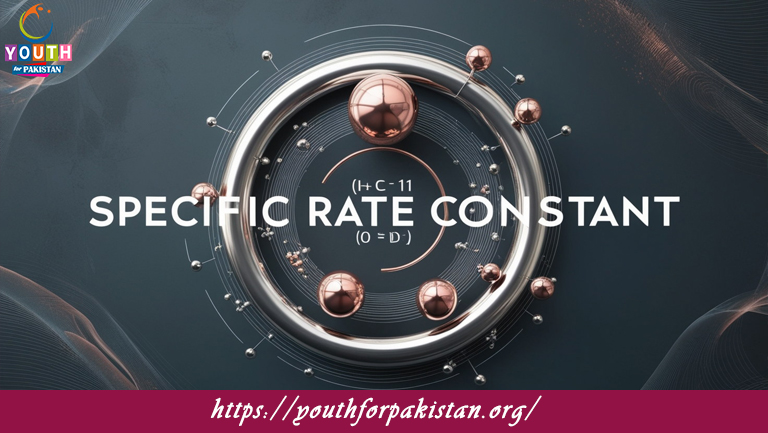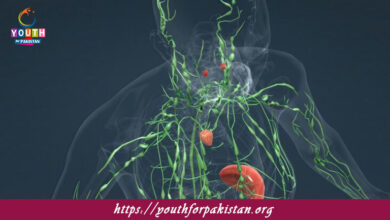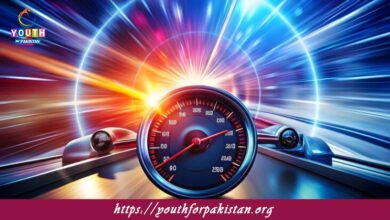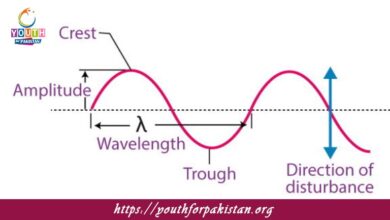
Welcome to the Specific Rate Constant MDCAT MCQs with Answers. In this post, we have shared Specific Rate Constant Multiple Choice Questions and Answers for PMC MDCAT 2024. Each question in MDCAT Chemistry offers a chance to enhance your knowledge regarding Specific Rate Constant MCQs in this MDCAT Online Test.
- The specific rate constant kkk is independent of: a) Concentration b) Temperature c) Catalyst d) Reaction mechanismAnswera
- The units of the specific rate constant kkk depend on: a) The concentration of reactants b) The order of the reaction c) The temperature d) The activation energyAnswerb
- For a first-order reaction, the specific rate constant kkk has units of: a) mol/L·s b) L·mol⁻¹·s⁻¹ c) 1/s d) L²·mol⁻²·s⁻¹Answerc
- The specific rate constant kkk for a reaction increases with: a) Decreasing temperature b) Increasing concentration of reactants c) Addition of an inhibitor d) Increasing temperatureAnswerd
- The specific rate constant kkk is: a) A universal constant for all reactions b) The same for all reactions of the same order c) Dependent on the temperature d) Independent of the reaction mechanismAnswerc
- For a zero-order reaction, the specific rate constant kkk has units of: a) mol/L·s b) L·mol⁻¹·s⁻¹ c) 1/s d) L²·mol⁻²·s⁻¹Answera
- In the Arrhenius equation, the specific rate constant kkk is related to: a) Activation energy b) Frequency factor c) Temperature d) All of the aboveAnswerd
- The specific rate constant kkk for a second-order reaction with respect to one reactant has units of: a) mol/L·s b) L·mol⁻¹·s⁻¹ c) 1/s d) L²·mol⁻²·s⁻¹Answerb
- The rate law for a reaction is given by Rate=k[A][B]text{Rate} = k[A][B]Rate=k[A][B]. Here, kkk represents the: a) Equilibrium constant b) Rate constant c) Reaction order d) Activation energyAnswerb
- The specific rate constant kkk can be determined experimentally by: a) Measuring the rate of reaction b) Measuring the concentration of reactants c) Both a and b d) Measuring the temperatureAnswerc
- If the reaction order increases, the units of the specific rate constant kkk: a) Increase in complexity b) Decrease in complexity c) Remain the same d) Are unrelated to reaction orderAnswera
- For a third-order reaction, the specific rate constant kkk has units of: a) mol/L·s b) L·mol⁻¹·s⁻¹ c) L²·mol⁻²·s⁻¹ d) L²·mol⁻²·s⁻¹Answerd
- The relationship between the specific rate constant kkk and temperature is given by: a) Van’t Hoff equation b) Arrhenius equation c) Gibbs free energy equation d) Boyle’s lawAnswerb
- The specific rate constant kkk for a reaction of order zero is independent of: a) Temperature b) Concentration c) Reaction mechanism d) None of the aboveAnswerb
- The units of kkk for a second-order reaction with two different reactants are: a) L·mol⁻¹·s⁻¹ b) L²·mol⁻²·s⁻¹ c) mol/L·s d) 1/sAnswera
- For a reaction with the rate law Rate=k[A]2[B]text{Rate} = k[A]^2[B]Rate=k[A]2[B], the specific rate constant kkk has units of: a) L²·mol⁻²·s⁻¹ b) L·mol⁻¹·s⁻¹ c) mol/L·s d) 1/sAnswera
- The specific rate constant kkk can be affected by: a) Pressure b) Volume c) Temperature d) All of the aboveAnswerc
- In a first-order reaction, the specific rate constant kkk is equal to: a) The half-life of the reaction b) The inverse of the half-life c) The slope of the concentration vs. time graph d) The slope of the ln(concentration) vs. time graphAnswerd
- The specific rate constant kkk for a reaction with the rate law Rate=k[A]3[B]text{Rate} = k[A]^3[B]Rate=k[A]3[B] has units of: a) L²·mol⁻²·s⁻¹ b) L³·mol⁻³·s⁻¹ c) L·mol⁻¹·s⁻¹ d) mol/L·sAnswerb
- The specific rate constant kkk is proportional to the: a) Number of molecules in a reaction b) Activation energy of the reaction c) Frequency of effective collisions d) Pressure of the systemAnswerc
- The units of kkk for a zero-order reaction are: a) mol/L·s b) L·mol⁻¹·s⁻¹ c) L²·mol⁻²·s⁻¹ d) 1/sAnswera
- The specific rate constant kkk in the rate law is often referred to as the: a) Pre-exponential factor b) Rate-determining step c) Frequency factor d) Proportionality constantAnswerd
- For a second-order reaction, the units of the specific rate constant kkk are: a) mol/L·s b) L·mol⁻¹·s⁻¹ c) L²·mol⁻²·s⁻¹ d) 1/sAnswerb
- The specific rate constant kkk for a first-order reaction depends on: a) The concentration of reactants b) The temperature c) The volume of the system d) The pressure of the systemAnswerb
- The units of the specific rate constant kkk for a reaction of order 2 with respect to a single reactant are: a) L·mol⁻¹·s⁻¹ b) L²·mol⁻²·s⁻¹ c) mol/L·s d) 1/sAnswerb
- For a zero-order reaction, the rate is: a) Independent of the specific rate constant b) Directly proportional to the specific rate constant c) Inversely proportional to the specific rate constant d) Quadratically related to the specific rate constantAnswerb
- The specific rate constant kkk is directly proportional to: a) Concentration b) Temperature c) Pressure d) VolumeAnswerb
- The rate law Rate=k[A]2[B]1text{Rate} = k[A]^2[B]^1Rate=k[A]2[B]1 indicates the reaction is: a) First order b) Second order c) Third order d) Zero orderAnswerc
- The specific rate constant kkk for a first-order reaction is independent of: a) The concentration of reactants b) The temperature c) The time d) The activation energyAnswera
- The specific rate constant kkk for a reaction where Rate=k[A]3text{Rate} = k[A]^3Rate=k[A]3 has units of: a) L²·mol⁻²·s⁻¹ b) L³·mol⁻³·s⁻¹ c) L·mol⁻¹·s⁻¹ d) mol/L·sAnswerb
- The specific rate constant kkk is primarily dependent on: a) The concentration of the reactants b) The nature of the reactants c) The physical state of the reactants d) The temperatureAnswerd
- The specific rate constant kkk for a reaction where Rate=k[A]2[B]2text{Rate} = k[A]^2[B]^2Rate=k[A]2[B]2 has units of: a) L²·mol⁻²·s⁻¹ b) L⁴·mol⁻⁴·s⁻¹ c) L·mol⁻¹·s⁻¹ d) mol/L·sAnswerb
- In a reaction, a higher specific rate constant kkk indicates: a) A slower reaction b) A faster reaction c) No change in reaction speed d) A reversible reactionAnswerb
- The specific rate constant kkk for a third-order reaction with two reactants has units of: a) L·mol⁻¹·s⁻¹ b) L²·mol⁻²·s⁻¹ c) L³·mol⁻³·s⁻¹ d) mol/L·sAnswerc
- The rate constant kkk is expressed in terms of: a) Number of molecules b) Number of moles c) Concentration and time d) Volume and pressureAnswerc
- For a reaction with the rate law Rate=k[A][B]2text{Rate} = k[A][B]^2Rate=k[A][B]2, the specific rate constant kkk has units of: a) L·mol⁻¹·s⁻¹ b) L²·mol⁻²·s⁻¹ c) L³·mol⁻³·s⁻¹ d) mol/L·sAnswerb
- The specific rate constant kkk for a zero-order reaction is dependent on: a) The temperature b) The concentration of reactants c) The pressure d) The timeAnswera
- The specific rate constant kkk in the equation Rate=k[A][B]2text{Rate} = k[A][B]^2Rate=k[A][B]2 is independent of: a) Time b) Concentration of A c) Concentration of B d) Reaction orderAnswera
- The specific rate constant kkk is usually determined by: a) Calculating the Gibbs free energy b) Measuring the reaction rate c) Observing the change in pressure d) Calculating the entropy changeAnswerb
- The specific rate constant kkk for a reaction where Rate=k[A]4[B]text{Rate} = k[A]^4[B]Rate=k[A]4[B] has units of: a) L⁵·mol⁻⁵·s⁻¹ b) L⁴·mol⁻⁴·s⁻¹ c) L²·mol⁻²·s⁻¹ d) mol/L·sAnswera
If you are interested to enhance your knowledge regarding Physics, Chemistry, Computer, and Biology please click on the link of each category, you will be redirected to dedicated website for each category.





